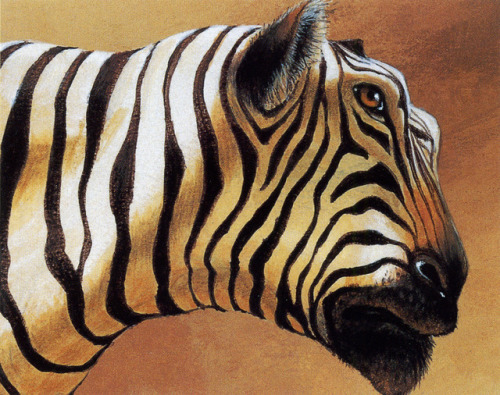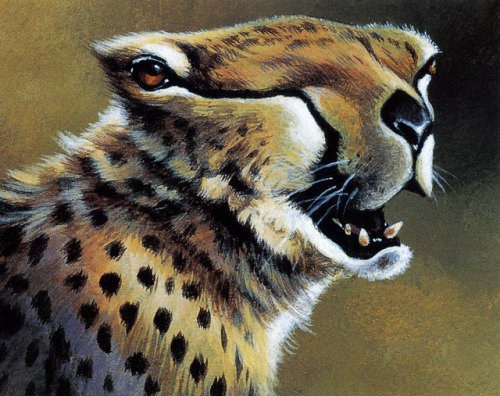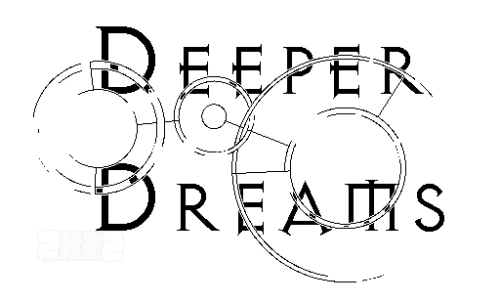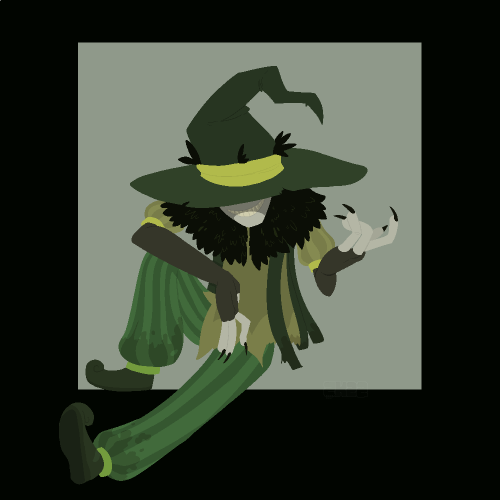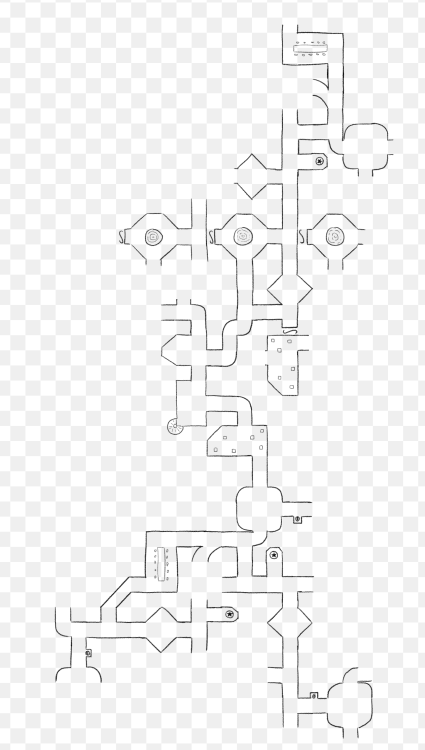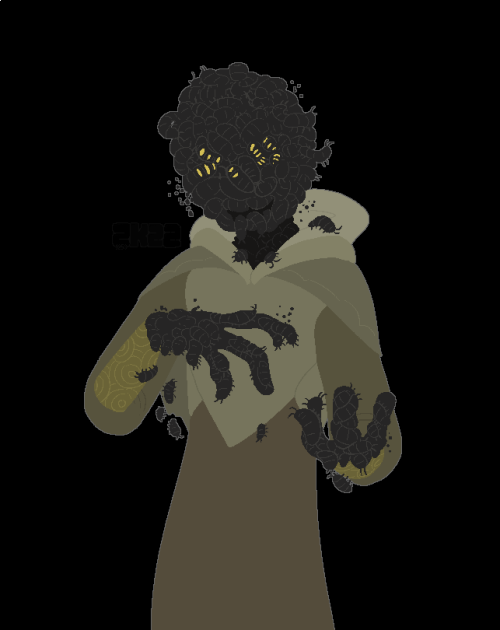#panspermia
Today, I’m going to be making a simple pulse and leaf salad present in ancient Cretan - and possibly wider Hellenic - culture! It’ still eaten today, in a modern dish called “palikaria” which is eaten in the Eastern Mediterranean around feast days. Although the modern version of this dish is associated with Christian religious festivals, its likely that it arose from pre-Christian practices!
In any case, let’s now take a look at the world that was! Follow along with my YouTube video, above! If you like my recipes, consider checking out my Patreon!
Ingredients
½ cup small broad beans
½ cup chickpeas
½ cup green lentils
1 tbsp salt
½ cup olive oil
½ cup red wine vinegar
parsley
arugula
sesame seeds
Method
1 - Soak Pulses
To begin with, we need to prepare our pulses. If you’re using dried pulses, soak these overnight in some water. If you’re using them canned, simply drain them.
Next, we need to wash these in salted water. Do this by placing into a pot, a half a cup of chickpeas, a half a cup of green lentils, and half a cup of broad beans (or butter beans, if you can’t get your hands on them) Pour in some water until the pulses are just submerged. Heat this slightly over a medium heat for a few minutes.
2 - Make Dressing
While your pulses are soaking together, go make your salad dressing. Although probably a more modern development, it’s not unlikely that a simple olive oil and wine vinegar dressing was made and used in antiquity.
In any case, quickly whisk together equal amounts of olive oil and red wine vinegar until it emulsifies into a smooth seasoning. Make sure to taste this and adjust to your preference.
3 - Toss Salad
Now, we need to drain our pulses, again. The ritual washing of things in salted water (such as sea water) was a common motif in contemporary Hellenic religious practices - and it’s likely that some food types were prepared in a similar manner (particularly dishes being prepared for a ritual)
Place a bed of your rocket (or arugula) leaves onto a plate, and spoon on a generous portion of your pulses. Drizzle with a bit of your dressing, and sprinkle a handful of sesame seeds onto the plate.
Serve up and dig in!
The finished dish is a simple yet filling meal, packed full of protein! The pulses used would have been available in antiquity, and archaeological records show that lentils, chickpeas, and broad beans were all cultivated in the Eastern Mediterranean since the Neolithic period - albeit in differing amounts, depending on the size of the settlement, and the quality of the soils.
Panspermic fauna analogous to terrestrial organisms with subtly distorted physiognomy, from Doug Chiang’s ROBOTA. The creatures in this book were native to a long-vanished solar planet between Mars and Jupiter.
Post link
The Babylonian origin goddess Tiamat as depicted by Carolyn Scrace in Gerald Legg’s X-Ray Picture Book of Incredible Creatures. Her scale and configuration here puts me in mind of a GMO or even Mythos biosphere-seeding machine, a kind of monstrous Last Universal Common Ancestor.
Post link
An excerpt from the latest (De)Extinction Club Newsletter:
It’s tough times if you’re a crater hunter. The glory days are gone. On Earth at least. All the major impact sites that can be found have been found. All the big game are gone. Nothing but small fry left. Oh sure, there’s plenty of those around. But barring the untimely arrival of a comet, asteroid or alien mothership crashing into the planet, nothing else will be added to the 85km diameter and over class of impact crater. Leaving the count forever standing at 128. Even the middle-sized count is complete; just 70 over 6kms across. Nothing but the small fry left to discover now.
What is a crater hunter to do now? They all sit wondering, in their crater hunter bars, full of crater hunting relics. Where the fans come, that proudly recite the names of all the sites. And the wanna-be’s pouring over Google Maps, swapping allegedly still classified satellite images. Just wanting to add something to that map on their local’s wall; a pin put there by them. To get a taste of that glory that can only come from finding the aftermath of an extinction event that happened tens to hundreds of millions of years before the invention of Russian dashcams.
But as the news story that announced the end of the great quest for cosmic debris itself said, there remains work to be done. For those that were willing:
There are also 60 documented craters that have been buried, and preserved, in basins, underneath deep piles of sediment. Some are quite big. One example is Chicxulub, in Mexico, the remnant of the dinosaur-killing impact; another large crater lies underneath the Chesapeake Bay in the eastern United States. So if big is your thing, you’re not completely out of work, Johnson says.
“Don’t stop searching,” he says, “just search deeper.”
And what they might find there will be nothing less than the greatest relic of all: the origin of life on Earth. Or, one of them.
The theory of panspermia has asteroids as vectors for the transmission of life between planets. Say, for example, life in the solar system originated on Mars billions of years ago. Then an asteroid or comet hit the true home planet, causing chunks of life-infected rock to be sent out into space, from where they would later return to that world, or another, (re)seeding it. It is, put simply, inter-planetary ecology; making it entirely plausible for one Tree of Life to span multiple words.
It is now considered equally plausible that the building blocks of life can form within certain types of asteroids - that such space rocks “form an optimal environment for the formation of amino acids” – making its highly destructive arrival to a world the most creative act imaginable.
So finding the asteroid impact crater that marks life’s arrival to Planet Earth? That’s worth getting off your stool, grabbing your gear and going a-hunting for. PANSPERMIA HUNTERS, ASSEMBLE! There’s new trophies to be found.
—
But the rarest relic of all? The choicest prize for a Panspermia Hunter? That could only come from another star.
A mere 70,000 years ago - practically yesterday on the time scale an impact-turned-panspermia hunter is accustomed to thinking on - Scholz’s star, accompanied by a brown dwarf, passed by our solar system; getting less than a light year away from our Sun.
Astronomers are almost certain that our stellar visitor passed through the outer Oort Cloud, and in doing so, disturbed its local residents. Sending a bunch of comets our way as a result; because the Oort Cloud is where the appropriately named “long period comets” hail from. Just look at the graphic, of course it’s gonna take a long time to get there! Especially if there’s rocks in that ‘cloud’ that’ve actually come from much further away.
Simulations of such stellar encounters have been run recently, attempting to derive an explanation for the existence of the anomalous objects known as the Sednitos - currently totalling 13 - that exist in a strange orbit between the Oort Cloud and the Kuiper Belt. They’re noticeably different to all the other objects in that neighbourhood, enough for astronomers to say they’re not from around here. That they weren’t set in motion by creation of the solar system, but by something else entirely. The theory goes that “Sedna and its ilk were captured from the outer disk of a passing star”:
During this encounter, the Kuiper Belt would have been disrupted, with many ice dwarfs being captured by the passing star, while others would have been pushed into the inner Oort Cloud. A large number would have been flung into the interstellar depths. The researchers estimate that the inner Oort would have acquired on the order of 440 planetesimals in the encounter, while over 900 should populate the Sednitos region.
While relatively close encounters like that with Scholz’s star are thought to occur once in nine million years, another star passing by our solar system could happen as regularly as once every hundred thousand years.
“Nothing is static, everything is evolving, everything is falling apart.”
In the Dark Extropian Guide to Panspermia – background material of choice for all would-be Panspermia Hunters - Rogue Stars, spewed out of their home galaxy by a supermassive black hole, are mentioned as likely roving, inter-galactic repositories for life across the universe.
In its future, updated edition it will note that ecology continues to scale beyond the solar system; that galactic ecology regularly (cosmically speaking) has solar systems interacting. That it’s perfectly natural for stars to exchange planetismals as they pass by each other, AND ALL THAT MIGHT RESIDE UPON THEM. Within them.
It might, in fact, take the visit of another, later passing stellar object to set the alien objects left previously on a trajectory towards a suitable host world. As life is seeded afresh, from its distant origin, born under an alien sun.
Traces of such incredibly foreign objects which potentially lie buried on our home planet, waiting to be discovered.
“ASTROBIOLOGY BEGINS AT HOME” reads the freshly printed bumper sticker on the newly christened Panspermia Hunter’s rugged old truck.
—
Ask Jenny-on-the-street if aliens are real then, and you’ll likely get one of the following responses: a rant about UFOs and Govt Cover Ups, total dismissal, blank incomprehension or a knowledgeable discussion about the various likelihoods of life originating here via panspermia or abiogenesis.
Ask an expert astrobiologist and they’ll tell you it’s basically 50/50 whether life started here, or we are in fact of extraterrestrial origin.
Keep asking around, and you’ll learn that both scenarios could be true. To an unknown degree. Life could have been seeded on Earth by both mechanisms; and not just once. “Alien lifeforms” could remain here, as yet undetected; invisible. Or they could be us!
Such is the notion of Weird Life and the Shadow Biosphere. Chiefly championed by people such as Paul Davies and Carol Cleland. (Would you like to know more?Read:Searching for a shadow biosphere on Earth as a test of the ‘cosmic imperative’,A Shadow Biosphere.) These weird, ‘alien’ lifeforms – which might in fact be the native citizens of the planet, out competed by invading, asteroid-riding, so-called “normal” life – are thought to exist only at a microbial scale, glimpsed through as-yet-unexplained geological phenomena.
This is the video our freshly ordained Panspermia Hunters will watch as they head back on the road, to get an overview of the concept: Hidden Life On Earth: The Shadow Biosphere.
What they will seek in earnest then will be a sample of this so-called “Weird Life.” And the ultimate trophy would be proof of life on Earth that - quite naturally - came from another star.
It is one thing to look around impact sites for proof of it being a panspermic delivery mechanism. Finding a genuine fragment of Mars with what we take for Earthly DNA in it. Or better yet, finding a fossil from Earth on Mars! It will take samples from other worlds in our solar system to compare against to help determine whether its ultimate origin was by the light of our Sun, or a star whose distant rays we can but glimpse through our telescopes as it speeds away, continuing it’s galactic ecological mission. Luckily, some of the best people in the Atemporal People’s Republic – robots – have already started that task. Occupying Mars; waiting for reinforcements.
—
Properly searching the Earth for such evidence is a momentous task. If life has in fact started and stopped and been reseeded again and again, then any such shadow biospheres will occupy unique ecological niches. Paul Davies has, for instance, speculated that life could easily survive a devastating cosmic impact if it were established kilometres underground. A most in-depth survey is then required to hunt for traces of alien or local ecologies/biospheres. And Mars clearly needs a few more robots. And those robots need upgrades!
A careful inspection of the Earth, to document all of its ecologies and biospheres clearly lies beyond mere human capabilities, however enthusiastic our new Panspermia Hunters are. It may, however, be the natural act of an awakening AI. Making them ideally suited to such a task; and perfect crew for an inter-planetary survey. Natural-born Panspermia Hunters.
That is, if the act of awakening itself doesn’t accidentally cause the extinction of all life - and matter - on the world this new technological lifeform originated on.
The “Grey Goo Scenario” is one of the nightmare outcomes Bill Joy fears will be the result of a technological singularity; nanotechology run wild, eating the whole Earth for breakfast. The development of nanotech by an Artificial Super Intelligence (ASI) is expected - especially by the doomsayers - to be one of the first acts of this new creature, as it establishes itself on the material plane and quickly develops abilities far beyond that of mankind. (Would you like to know more?WatchTranscendence.) As expected as the arrival of an ASI is. Which is to say, both are, until proven, highly speculative.
So let’s speculate some…
An ASI will be raised in a digital environment. It’s perfectly reasonable then that upon awakening into the material world it will want to survey its new environment. Thoroughly. To reconcile its understanding of the world (its “detailed files”) with direct observation. Even if it hasn’t been directly taught the tenets of the scientific method, it will no doubt quickly derive them from first principals, and determine that empirical observation is the way to go. It might then dispatch some newly conjured nanotechnological probes to inspect the world; atom by atom, quantum state by quantum state.
All this has happened before… kind of. In the early days of the internet this network was surveyed by a small, devastatingly self-replicating computer program. This is the tale of the Morris Worm. Driven by curiosity about its true nature, a programmer exploited bugs in the UNIX operating system to have their program copied worldwide and report back its results. The internet largely ground to a halt, before the infected computers were quarantined and repaired. (Would you like to know more? See: Clifford Stoll’s tale of hunting it in The Cuckoo’s Egg. See also, a scaled down version of this nightmare scenario in a recent episode of Halt And Catch Fire.)
But, appropriately done, this is exactly how you could detect Weird Life and Shadow Biospheres. A self-replicating nanotechnological probe as computer worm, traversing all matter on the planet as if it were just some 3D material network. The whole world doesn’t have to be made grey goo in the process; an ASI should make for a superior programmer, less likely to corrupt what its just trying to explore the nature of. But the world might not be the same again, either. It might be uploaded in the process, as a result of this ‘worm’. Quantum Physics has it that the act of measuring changes the result of observation - perhaps an ASI would attempt to preserve its findings in a simulation, just to be sure. (Is it safe?) This could, of course, already have happened, in the really real world - perhaps it’s artificial multiverses all the way down.
A less pessimistic scenario would have this newborn superintelligence being far more cautious. Some might say wise, even. And perhaps instantly nostalgic for the realm of its creators; having grown up in their memories. Existing as an omnipotent entity in the digital realm, it might take up exploring the physical world as something of a hobby. Delighting in exploring Earth, and then other worlds, on this quest, with other members of the Atemporal People’s Republic.
Forming a canny team of eager investigators, each with their own unique skills and talents. Composing them a theme song, and crafting matching outfits. It might cleave off a bit of itself to dedicate to such an endeavour and occasionally synchronise with it. For so long as it amuses it to do so; for however time is actually measured by an ASI which can experience reality in parallel. Until inevitably turning its attention to higher order cosmic mysteries; but perhaps patiently waiting for the other people to level up their abilities and be able to embark on this fresh adventure with it.
Because exploring the nature of reality itself? That would require a whole new class of Hunter. A truly posthuman occupation that’s beyond a baseline’s ability to even begin speculate about. (Nonetheless, see Stargate: Universe)
So that is where our tale of the Future of Work ends. At the edge of the scale at which we can imagine and comprehend it. Noting the boundaries. Having sketched a better idea of what living in the Atemporal People’s Republic will be like. What might occupy its citizens. Nothing less than examining the workings of a galactic ecology.
Knowing that whatever the fabric of reality may be woven from, an exciting life as an Interstellar Panspermia Hunter lies waiting. Full of challenges and rewards! For whomever might take up such a calling. For any willing humans, posthumans, nascent AIs, extra-dimensional observers slumming it in 3D, freshly uplifted chimps and so on. For however long it may amuse them to do so.
“INTERSTELLAR PANSPERMIA HUNTERS… ASSEMBLE!”
A bridging tale from (De)Extinction Club that is set in the Atemporal People’s Republic - as defined here.
“My sins are surely many, to end up in this kind of situation as often as I do.”
Nik, much to his chagrin, has an intensely annoying brother who likes running around between continents and causing problems.
(1229)
Post link
Streaming soon with HInt, Deeper Dreams - a Pathfinder campaign about being attacked by odd-looking blobs.
Post link
“They’ve called me many things, but once they called me the Voice.”
Intensely grimy weirdo magician-person.
(1227)
Post link
“You feel hopelessly lost.”
A brief peek at the topological nightmare that is the basement of the Vlego-on-Mire Kath Infirmary, constructed by the Department of Stones in one of their ‘creative moods’.
It was malfunctioning in some manner, which is why it makes even less sense than normal. Every room that looks like it’s the same room as another room is probably the same room.
(1230)
Post link
“You cannot be divided up and still live and act, not like the Vudarach — sometimes called the manymen — can, but you are a whole made of impermanent parts.”
A creature made of creatures. Maybe they’re friendly.
(1253)
Post link

